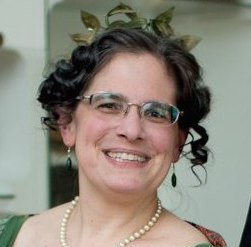Twelve years ago, I wrote a brief post explaining how to dance “La Russe”, a redowa/mazurka variation I found, like so many others, in M. B. Gilbert’s Round Dancing (Portland, Maine, 1890) and [George] Washington Lopp’s La Danse (Paris, 1903). I remain confident in my reconstruction, but in the intervening years I’ve discovered the official music for it, which clarifies that it was intended as an independent dance rather than merely a variation, and a bit of background. So it’s time to revisit La Russe!
First, I’d suggest going back and reading my original post on La Russe, since I am not going to go back through the details of how to perform it.
The choreographer of La Russe remains unknown, but apparently that was intentional: La Russe was created and promoted by the American Society of Professors of Dancing, which had a policy of not crediting the choreographer(s) for the dances they published as their own. La Russe was established among them by early 1882, as their proceedings record that at their thirty-eight meeting, on April 2, 1882, they voted to publish original music for the dance by George W. Allen and noted that the step would be practiced at their next meeting.
(more…)
